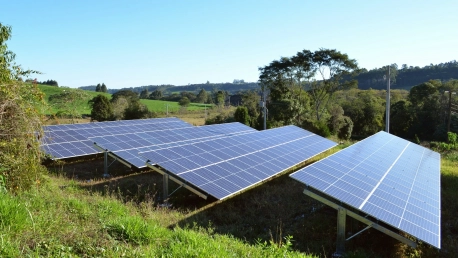Solar energy is rapidly expanding as a key player in the global energy landscape, propelled by its green credentials and the trend of falling costs. As it stands, solar power holds immense promise for a substantial contribution to our energy demands while simultaneously addressing environmental concerns associated with fossil fuels. Nevertheless, this source of clean energy is not without its challenges.Although solar panels can harness the sun’s energy across many parts of the world, certain geographical regions with less sunlight pose challenges for consistent energy generation. Moreover, the intermittent nature of solar power – with energy production ceasing at night or during cloudy days – requires robust storage solutions or complementary power systems to ensure a steady supply.Investments in technology to boost the efficiency of solar panels and to store energy are crucial. Current advancements in battery storage, grid infrastructure, and even policy and regulatory frameworks are central to overcoming these hurdles and maximizing the potential of solar energy.As the technology progresses, solar power’s role in the global energy mix is poised to expand further. Overcoming its limitations could lead to solar energy meeting a larger share of our power requirements, signifying a major stride towards a more sustainable and cleaner energy future.
Solar Power Technology
The Advantages of Photovoltaic Cells
Solar panels, powered by photovoltaic (PV) cells, are revolutionizing renewable energy, thanks to their ability to convert sunlight into electricity via semiconductor materials. As technological improvements surge, these PV cells are now more efficient and affordable, contributing to a widespread uptick in solar energy utilization. This advancement has enabled various scales of application, from home rooftops to vast solar farms, empowering both individual and collective strides towards a renewable energy future. Recognizing solar power’s potential, governments globally are propelling its growth with incentives, making solar investments increasingly attractive. The continual drop in PV costs, paired with policy support, marks a trend towards cleaner, self-sustained energy sources on a grand scale.
Challenges of Solar Energy
Although solar energy offers a multitude of benefits, several drawbacks need careful consideration. The variable nature of solar power—day-night cycles and weather conditions—means that its reliability depends on the availability of sunlight. As such, energy storage solutions like batteries are crucial in managing supply stability. These technologies, however, contribute to the upfront costs and have their environmental implications due to production and disposal.Additionally, the production of PV cells involves energy-intensive processes, and while this energy may be recouped over time, it represents an initial carbon footprint that cannot be overlooked. Land use is another concern as large-scale solar installations require a significant amount of space, potentially impacting local ecosystems and land resources.
Outlook on Solar Energy
Economic and Environmental Impact
As the world leans into a future prioritizing sustainability, solar energy stands out as a compelling proposition. Its capacity to generate energy without fuel or significant ongoing costs gives it a distinct economic and environmental edge over fossil fuels. The industry’s growth is propelled not only by market forces but also by a groundswell of societal support for cleaner energy practices. As solar panel costs continue to plummet and efficiencies rise, payback periods shorten, energizing the adoption cycle.Government policies play a critical role in shaping the solar market. By offering incentives, such as tax credits or feed-in tariffs, authorities can significantly lower the barriers to solar adoption, which often include high initial investment costs. These policies have been instrumental in accelerating solar deployment in leading markets like Japan, Germany, and the United States, where solar power is increasingly cost-effective.
Future Perspectives and Advancements
Solar energy’s trajectory is firmly upward, propelled by ongoing improvements in technology and implementation methods. Innovations such as building-integrated photovoltaics (BIPV) and floating solar farms are examples of how this sector can creatively and efficiently use space and resources. Moreover, advancements in energy storage technology, like more efficient batteries and even hydrogen production, could alleviate some of the intermittency issues associated with solar power.At the heart of solar energy’s bright future is the alignment of environmental benefits with economic incentives—making it an attractive investment and a linchpin for transitioning to a greener energy mix. As this alignment strengthens with rising environmental awareness and technology improvements, solar energy has the potential not just to supplement but to significantly reshape our energy landscape.









